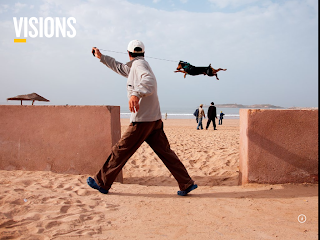Enric Sala, Marine Ecologist and Diver
Dream: Dive the Poles
Must: Dive Cocos Islands
Alex Honnold, Climber
Dream: Climbing Odyssey in Southeast Asia, Australia
Must: Climb Geyikbayiri, Turkey
Jill Kintner, Mountain Biker
Dream: Mountain bike New Zealand
Must: Mountain bike Morzine, france
Chris Davenport, Big-Mountain Skier
Dream: Ski South Georgia Mountain
Must: Ski Mount Ranier
Ueli Steck, Speed Alpinist
Dream: Climb in the Himalaya
Must: Climb the Swiss Alps
Ben Stookesberry, Whitewater Kayaker
Dream: Kayak the Entire Yarlung Tsangpo, Tibet
Must: Raft the Siang River, India
Will Gadd,
Ice Climber
Dream: Ice Climb Baffin Island and Greenland
Must: Ice Climb Rjukan, Norway
Kenny Broad, Cave Diver
Dream: Dive and Surf from Florida to the Bahamas
Must:Dive Caves in the Yucatan
Steph Davis, Climber
Dream: BASE Jump Off Shipton Spire, PakistanMust: Climb the Diamond, Longs Peak, Colorado
Jennifer Pharr Davis, Speed Hiker
Dream: Hike the Continental Divide TrailMust: Hike the GR 20, Corsica, France
Candice Appleby, Stand-Up Paddleboarder
Dream: Stand-Up Paddleboard PeruMust: Stand-Up Paddleboard Oahu, Hawaii
Gretchen Bleiler, Snowboarder
Dream: Snowboard the Himalayas
Must: Heli-Ski the Selkirks
Must: Heli-Ski the Selkirks
Will Steger, Polar Explorer
Dream: Traverse the High Arctic, Canada
Must: Dogsled Minnesota
Kristin Armstrong, Road Cyclist
Dream: Bike the Highest Roads in Western Europe
Must: Bike through Tuscany, Italy
Lynsey Dyer, Big-Mountain Skier
Dream: Ski Road Trip to the Powder High Way, US, Canada
Must: Ski Jackson Hole, Wyoming
Layne Beachley, Surfer
Dream: Surfing Circumnavigation of the Earth
Must: Surf Mentawai Islands
Andrew Skurka, Long-Distance Hiker
Sarah McNair-Landry, Kite Skier
Freya Hoffmeister, Sea Kayaker
Now, the Musts are supposed to be slightly easier, and considering the Dream List, they seem like a piece of cake, but man, oh man. Are those some tall orders!















